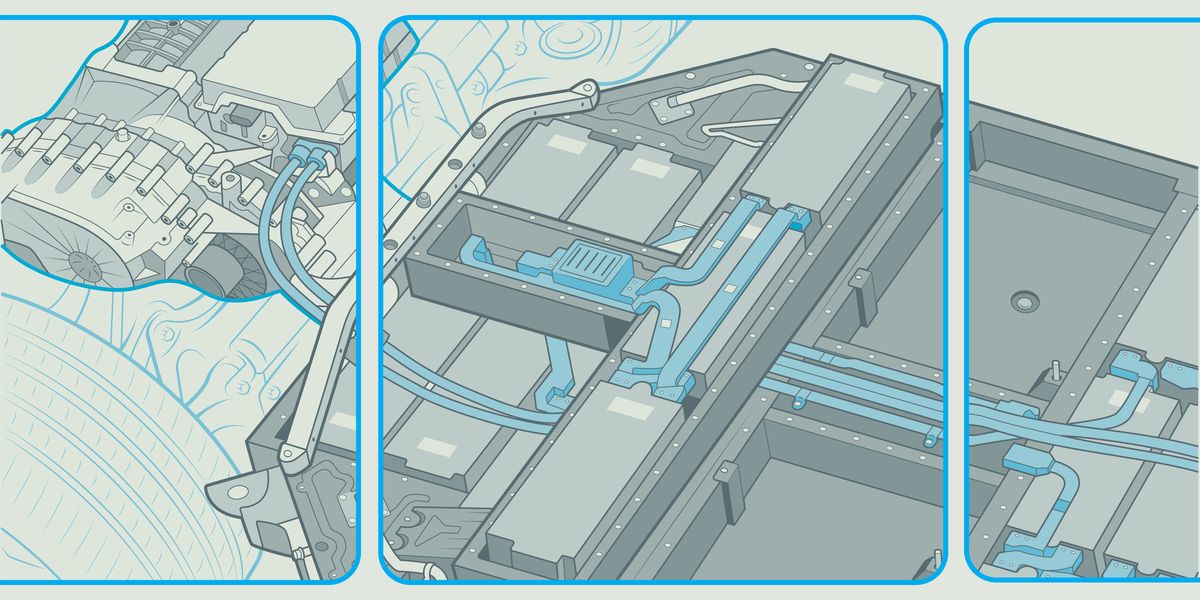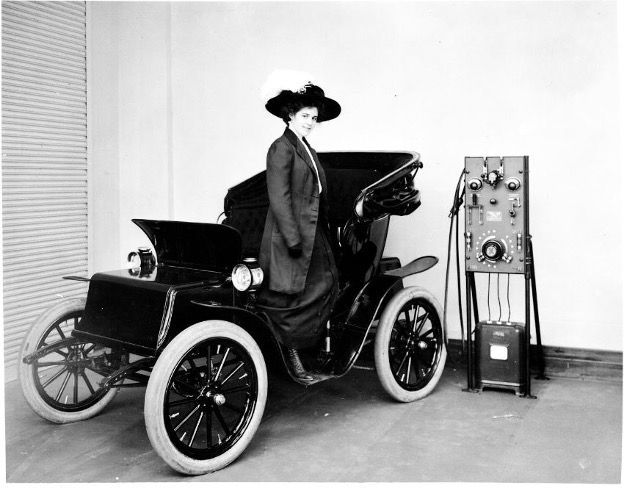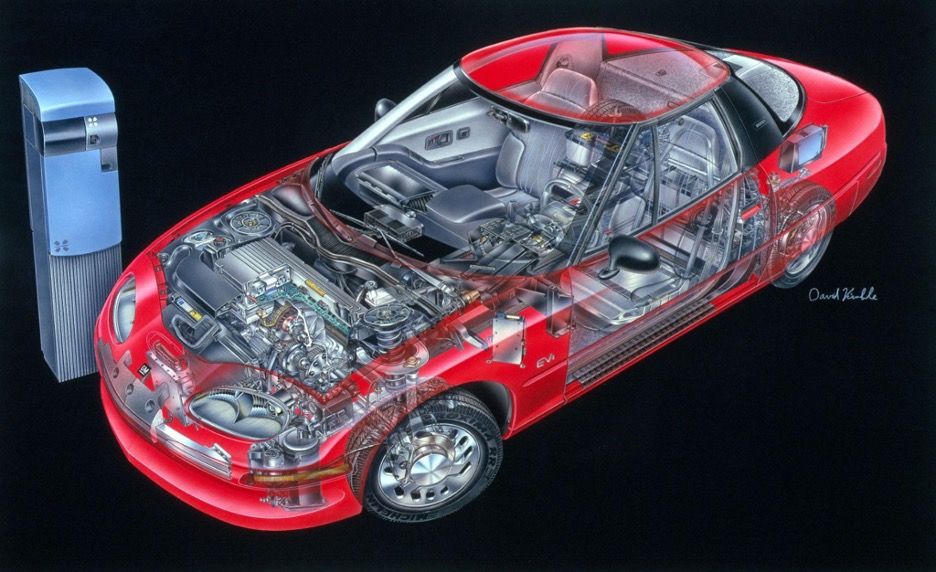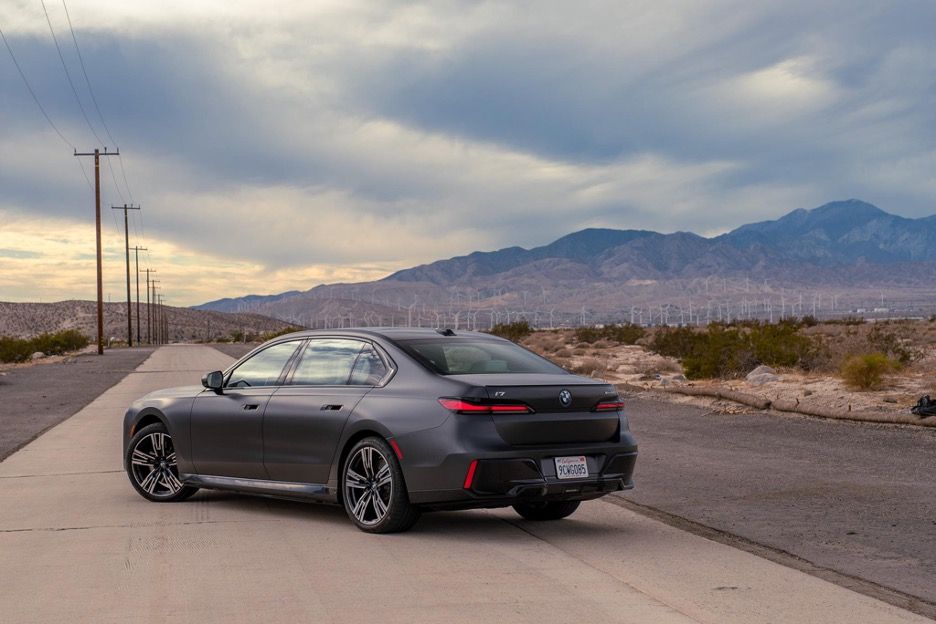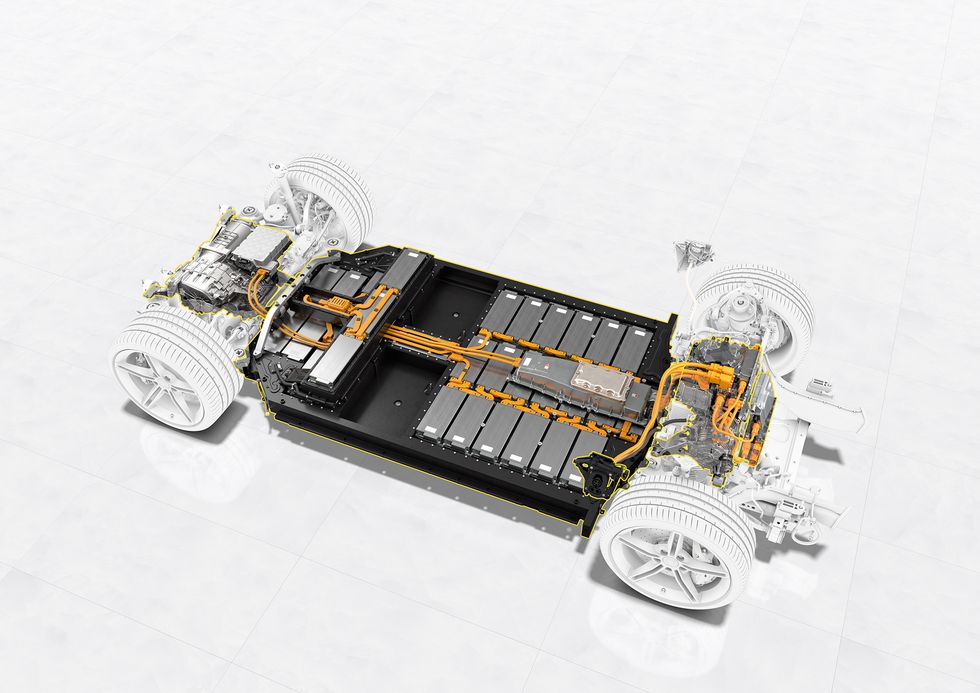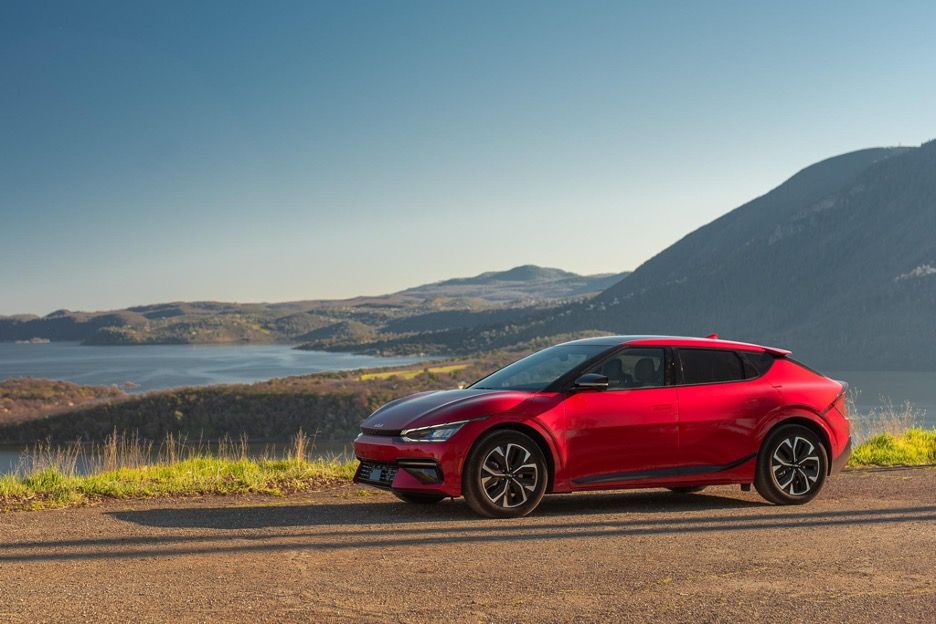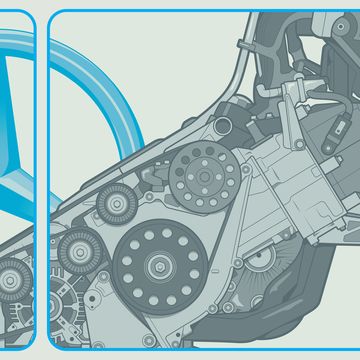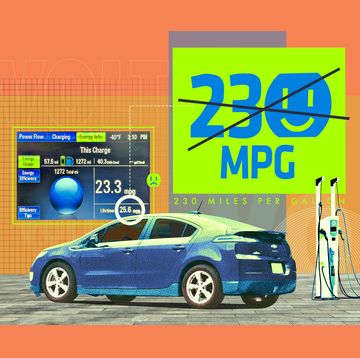With the advent of the electric era comes an entirely new lexicon for the automotive enthusiast to familiarize themselves with—kilowatt-hours, MPGe, SAE J1772—but few seem as poorly understood or as infrequently discussed as 400-volt or 800-volt EVs. There seems to be a general understanding that more volts equals better cars, even in manufacturer circles. (Evidence of this can be found with Dodge’s Charger Daytona concept; Dodge announced its 800-volt Banshee architecture would make the EV “...faster than a Hellcat in all key performance measures”. The company never specified how exactly that would work, though.)
Beyond “more is better," it gets hazy. Even automakers have a hard time explaining it. It’s understandable, because measuring the direct performance impact of higher voltages isn’t straightforward—you can’t plug a Nissan Leaf into a high-tension pylon and expect to blow the doors off a Lotus Evija—but it does still matter.
Prof. Vicki Scott’s EE 101
To understand how voltage could make a car faster, first we must understand what voltage is. It's a simple enough concept on its own, best described as electric potential energy. The easiest and most frequently used electrical-engineering 101 analogy is to compare voltage to a hydraulic loop: If a water pump system is a circuit, voltage is equivalent to the pressure in the pipes. Adding a more powerful pump or a larger reservoir full of water would increase the pressure in the pipes.
Similarly, adding higher voltage to an electrical power supply means it pushes more energy, or the same amount of energy with less current. Less current, in our water analogy, would mean we could use a smaller diameter pipe; adding more current would mean using a larger pipe. Mathematically, it’s very straightforward, and defined by Ohm’s Law: Voltage equals resistance times current. Auto manufacturers are already trying to minimize resistance, so voltage and current are the two variables left to play with—more of one means less of the other, and vice versa.
In EV terms, a higher-voltage architecture needs less current to push the same amount of power to the motor. This has an array of benefits. Lower current means that less wire can be used, which leads to a significantly lighter wiring harness. Reducing current also reduces heat, as current is the primary generator of heat in electronics. Lower heat means longer lifespans for electronics and batteries. And most importantly for an EV manufacturer’s advertising agencies, a higher-voltage, lower-current, lower-heat system allows for much faster charging times. Heat generation during fast-charging is usually the limiting factor for charging speed.
Note that adding voltage will not directly change the output of the motor, however. Electric motors are designed to work most efficiently and powerfully at a specific voltage, and putting more voltage through a motor not designed to handle these loads will actually make it less powerful. The motor needs to be built with the voltage in mind.
Low-Voltage Victorians, High-Voltage Millennials
Early EVs tended to use low voltages, as they were limited by the battery technology of their era. Most electric cars from the dawn of the motorized carriage in the late nineteenth century all the way through to the Seventies-era Citicar used sub-100-volt architectures (usually 48-volt or 72-volt systems) as they relied on series-wiring together 6 or 12-volt lead-acid batteries. (Series circuits add together voltages of batteries; parallel circuits do not.) Space and weight constraints rapidly became an issue with large, heavy lead-acid batteries, and so building higher-voltage systems was, for the most part, impractical.
As EVs enjoyed a second resurgence in the late nineties, however, battery tech and packaging evolved. The GM EV1, which used lead-acid batteries in its first iteration—second-generation vehicles used nickel-metal hydride (NiMH) batteries—nonetheless managed to cram 312 volts worth of power into its chassis. Most of the early EVs of this era hovered in the 300-400 volt range, even after the switch from lead-acid to vastly less heavy, more energy-dense NiMH or nickel-hydrogen batteries. One of the first lithium-ion battery cars, the Nissan Altra, aimed even lower, with a 247-volt architecture.
With the advent of more mass-produced lithium-ion batteries in cars such as the Nissan Leaf and Tesla Roadster, voltages mostly plateaued around the 400-volt mark. Automakers could have continued well beyond this, given the energy density of lithium-ion batteries. However, they stopped at 400 volts largely for cost reasons; as the German Electrical and Electronic Manufacturers‘ Association puts it, “lower voltages are preferably used for battery technology due to lower costs since the number of cell connections can be reduced, making battery management less complex.” Additionally, a common maximum rating for off-the-shelf electronics components is 600 volts (or 420 volts with an appropriate safety margin for longevity in a DC system). Being able to buy already-existing parts helped cut costs on top of battery construction savings. In an era before 350-plus-kW fast-charging was available, going higher voltage would have added cost with no tangible benefit.
As more EVs hit dealerships, the supply of existing 400-volt-ready electronics and other parts only increased. Economies of scale meant that subsequent EVs defaulted to using 400-volt systems, and this led to the advent of what is known as the 400-volt architecture, which is still the de facto norm today. It is not the sole option on the market any longer, however.
No Replacement For… Electric Potential Energy Displacement?
Until the 2019 debut of the Porsche Taycan, every EV used a 400-volt architecture. The Taycan, however, uses an 800-volt system that Porsche developed in-house, using technology it first honed in its Le-Mans winning 919 Hybrid race car.
It was not easy to be the first to market with an 800-volt architecture, however. As Calvin Kim, a spokesperson for Porsche, explained to me, the Taycan had no off-the-shelf equipment to take advantage of. “Almost all of the powertrain equipment, such as pulse inverters, on-board chargers, battery-management systems, and the motors themselves, had to be engineered specifically for the Taycan and its 800-volt architecture,” he said.
The benefits were tangible immediately, justifying the extra cost. Porsche claimed it cut 66 pounds of wiring alone thanks to the higher-voltage system, and the lower heat the system generated meant that top-speed pulls were easily replicable dozens of times in a row without a loss of power due to overheating. The Taycan’s novel 800-volt system paid massive benefits at the charger, as well. The lower-current system is capable of charging at an impressive 270 kW maximum speed, which allows the Taycan to charge its battery from 5% to 80% in just over 20 minutes. This was unrivaled at its debut.
Art-Deco EVs, or The Future of Architecture
Since the debut of the Taycan, a handful of manufacturers have switched to 800-volt systems. The Kia EV6, Hyundai Ioniq 5 and Ioniq 6, and the Taycan-based Audi e-Tron GT all use 800-volt architectures, and the Lucid Air uses a proprietary 900-volt system. This handful of EVs can all approach the charging speed of the Taycan (Lucid claims the Air can charge at an absurdly fast 300-plus kW, making it the fastest on the market). Most analysts believe the consumer demand for faster charging times and the developing economies of scale for higher-voltage components mean that by the end of the decade, most new EVs will be 800-volt.
Some automakers, not wanting to switch to a more-expensive 800-volt architecture just yet, have developed clever workarounds to derive some of the benefits without all of the cost. GMC’s Hummer EV uses two separate 400-volt battery packs wired in parallel during normal operation, which means the drivetrain is built on a 400-volt architecture. During fast-charging, however, it can flip a switch and wire the two packs in series, which combines their voltages to temporarily make it an 800-volt system. This allows it to charge much faster, at speeds of around 300 kW.
Why Should We Care
Higher-voltage architectures, such as 800-volt systems, mean higher-efficiency EVs with much faster charging speeds. Longevity of major electronic and battery components can also benefit, thanks to the lower heat generated by low-current, high-voltage systems This (along with better battery temperature management) means that we’ll likely see longer-lasting electric cars in the future. The introduction of the sub-$50,000 Hyundai and Kia EVs with 800-volt systems is a good sign for the future affordability of more advanced EVs, and it’s likely that buying an 800-volt versus a 400-volt car will be a serious selling point as time goes on and consumers learn more about the underpinnings of their EVs.
For enthusiasts, while higher-voltage systems won’t make your car faster, they will make it more replicably fast, as overheating electrical components will become much less likely. This will likely mean more EV track days, which we can all agree will be a good thing.
